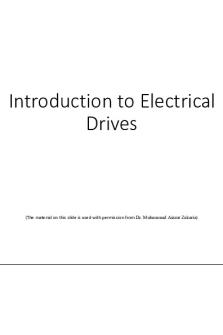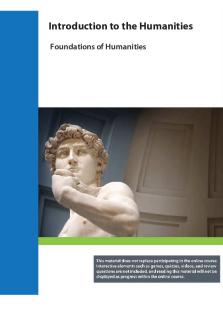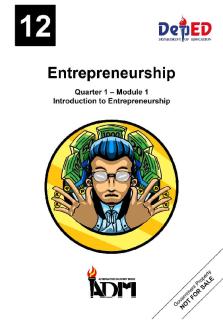Module 1 - Introduction to Electrical Drives PDF

| Title | Module 1 - Introduction to Electrical Drives |
|---|---|
| Author | Muhammad zahin muhammad zakir |
| Course | Ughk |
| Institution | Universidad Motolinia del Pedregal A.C. |
| Pages | 34 |
| File Size | 1.2 MB |
| File Type | |
| Total Downloads | 53 |
| Total Views | 135 |
Summary
Download Module 1 - Introduction to Electrical Drives PDF
Description
Introduction to Electrical Drives
(The material on this slide is used with permission from Dr. Muhammad Aizzat Zakaria)
Definition of Electrical Drives • Drives – system employed for motion control
Drives -> Motion Control
• Motion control requires prime movers
Prime Mover
• Electrical Drives – Drives that employ Electric Motors as prime movers
Electrical Drives -> Electric Motor as Prime Mover
2
Advantages of Electrical Drives Flexible control characteristic particularly when power electronic converters are employed
Wide range of speed, torque and power High efficiency – low no load losses Low noise Low maintenance requirements, cleaner operation Electric energy easily transported Adaptable to most operating conditions Available operation in all four torque-speed quadrants 3
Conventional Electric Drives
Ward-Leonard system - introduced in 1890s Disadvantages:
Bulky Expensive Inefficient Complex 4
Modern Electric Drives Power Source
Power Processing Unit
Motor
Load
feedback Control
Control
Reference
Unit
Small (compact) Efficient
Flexible Interdisciplinary 5
Electric Drives Application • Line Shaft Drives • Oldest form • Single motor, multiple loads • Common line shaft or belt • Inflexible • Inefficient • Rarely used
6
Electric Drives Application • Single-Motor, Single-Load Drives • Most common • Eg: electric saws, drills, fans, washers, blenders, disk-drives, electric cars.
7
Electric Drives Application • Multimotor Drives • Several motors, single mechanical load • Complex drive functions • E.g.: Assembly lines, robotics, military airplane actuation.
8
Basic Components of Electric Drives Power Source
Control Reference
Power Processing Unit
Control
Motor
Load
feedback
Unit
Power Source Motor Power Processing Unit (Electronic Converter) Control Unit Mechanical Load 9
Basic Components of Electric Drives - Motor Electrical Motor energy
Mechanical energy
• Obtain power from electrical sources • DC motors - Permanent Magnet or wound-field (shunt, separately excited, compound, series) • AC motors – Induction, Synchronous (wound –rotor, IPMSM, SPMSM), brushless DC • Selection of machines depends on many factors, e.g.: • application • cost • efficiency
• environment • type of source available 10
Basic Components of Electric Drives – Power Source • Provides energy to electric motors • Regulated (e.g.: utility) or Unregulated (e.g.: renewable energy) • Unregulated power sources must be regulated for high efficiency – use power electronic converters • DC sources • batteries • fuel cell • photovoltaic
• AC sources • single- or three- phase utility • wind generator 11
Basic Components of Electric Drives – Power Processing Unit • Provides a regulated power supply to motor • Enables motor operation in reverse, braking and variable speeds • Combination of power electronic converters Controlled rectifiers, inverters –treated as ‘black boxes’ with certain transfer function More efficient – ideally no losses occur Flexible - voltage and current easily shaped through switching control Compact Several conversions possible: AC-DC , DC-DC, DC-AC, AC-AC 12
Basic Components of Electric Drives – Power Processing Unit • DC to AC:
13
Basic Components of Electric Drives – Power Processing Unit • DC to DC:
14
Basic Components of Electric Drives – Power Processing Unit • AC to DC:
15
Basic Components of Electric Drives – Power Processing Unit • AC to AC:
16
Basic Components of Electric Drives – Control Unit • • • • •
Supervise operation Enhance overall performance and stability Complexity depends on performance requirement Analog Control – noisy, inflexible, ideally infinite bandwidth Digital Control – immune to noise, configurable, smaller bandwidth (depends on sampling frequency) • DSP/microprocessor – flexible, lower bandwidth, real-time • DSPs perform faster operation than microprocessors (multiplication in single cycle), complex estimations and observers easily implemented 17
Basic Components of Electric Drives – Component Selection • Several factors affecting drive selection: • Steady-state operation requirements • nature of torque-speed profile, speed regulation, speed range, efficiency, quadrants of operations, converter ratings
• Transient operation requirements • values of acceleration and deceleration, starting, braking and reversing performance
• Power source requirements • Type, capacity, voltage magnitude, voltage fluctuations, power factor, harmonics and its effect on loads, ability to accept regenerated power
• • • •
Capital & running costs Space and weight restrictions Environment and location Efficiency and reliability 18
DC or AC Drives? DC Drives
AC Drives (particularly Induction Motor)
Motor
• Requires maintenance • Heavy, expensive • Limited speed (due to mechanical construction)
• Less maintenance • Light, cheaper • High speeds achievable (squirrelcage IM) • Robust
Control Unit
Simple & cheap control even for high performance drives
Depends on required drive performance
• Decoupled torque and flux control • Possible implementation using single analog circuit
• Complexity & costs increase with performance • DSPs or fast processors required in high performance drives
Fast torque and flux control
Scalar control – satisfactory in some applications Vector control – similar to DC drives
Performance
19
Torque Equation for Rotating Systems • Motor drives a load through a transmission system (e.g. gears, V-belts, crankshaft and pulleys) • Load may rotate or undergo translational motion • Load speed may be different from motor speed • Can also have multiple loads each having different speeds, some may rotate and some have translational motion Represent motor-load system as equivalent rotational system
Te , m Motor
TL Load
20
Torque Equation for Rotating Systems
Torque equation for equivalent motor-load system:
TL Te , m
With constant inertia J,
d m d 2 Te TL J J 2 dt dt • •
Te TL
d J m dt
(1)
where: J = inertia of equivalent motor-load system, kgm2 m = angular velocity of motor shaft, rads-1 Te = motor torque, Nm TL = load torque referred to motor shaft, Nm
(2)
First order differential equation for angular frequency (or velocity) Second order differential equation for angle (or position) 21
Components of Load Torque • Load torque can be divided into: • Friction torque – present at motor shaft and in various parts of load. • Viscous friction torque Tv – varies linearly with speed (Tv m). Exists in lubricated bearings due to laminar flow of lubricant • Coulomb friction torque TC – independent of speed. Exists in bearings, gears coupling and brakes.
• Windage torque Tw – exists due to turbulent flow of air or liquid. • Varies proportional to speed squared (Tw m2).
• Mechanical Load Torque TL - torque to do useful mechanical work.
22
Mechanical Load Torque • Torque to do useful mechanical work TL – depends on application.
• Load torque is function of speed
TL mk where k = integer or fraction
• Mechanical power of load:
P TL m
and
m
2 nm 60
Angular speed in rad/s
Speed in rpm 23
Mechanical Load Torque
24
Mechanical Load Torque • Torque independent of speed , k = 0 • Hoist • Elevator • Pumping of water or gas against constant pressure
25
Mechanical Load Torque • Torque proportional to square of speed , k = 2 • Fans • Centrifugal pumps • Propellers
26
Mechanical Load Torque • Torque inversely proportional to speed , k = -1 • Milling machines • Electric drill • Electric saw
27
Steady State Operating Speed Motor T- characteristic – variation of motor torque with speed with all other variables (voltage and frequency) kept constant. SPEED Synchronous motor Induction motor
Series DC motor
Separately excited / shunt DC motor
TORQUE
Loads will have their own T- characteristics. 28
Steady State Operating Speed • At constant speed, Te= TL • Steady state speed is at point of intersection between Te and TL of the steady state torque characteristics
By using power TL electronic converters, the motor characteristic can be varied
Torque Te
Steady state Speed, r
r3
r1
r2
Speed 29
Steady State Stability • Drives operate at steady-state speed (when Te = TL) only if the speed is of stable equilibrium. • A disturbance in any part of drive causes system speed to depart from steadystate point. • Steady-state speed is of stable equilibrium if: System will return to stable equilibrium speed when subjected to a disturbance • Steady-state stability evaluated using steady-state T- characteristic of motor and load. dTe • Condition for stable equilibrium: dTL (9) dm d m 30
Steady State Stability • Evaluated using steady-state T- characteristic of motor and load.
Te TL J
• Assume a disturbance causes speed drop to r ’ • At the new speed r ’, Te’ > TL’
operation restored to steadystate point Steady-state speed is of stable equilibrium
Steady-state point A at speed = r
m Te
motor accelerates
d m dt
TL
dTL dTe d m d m
r r ’
TL’
Te’
T 31
Steady State Stability • Let’s look at a different condition! • Assume a disturbance causes speed drop to r ’
Te TL J
d m dt
• At the new speed r ’, Te’ < TL’
Point B is at UNSTABLE equilibrium
Te
TL
motor decelerates operation point moves away from steady-state point
Steady-state point B at speed = r
m
dTL dTe dm d m
r r ’
Te’
TL’
T 32
Torque-Speed Quadrant of Operation m Te
P = -ve Quadrant 2 Forward braking Quadrant 3 Reverse motoring P = +ve Te m
•Direction of positive (forward) speed is arbitrary chosen •Direction of positive torque will produce positive (forward) speed
Te m
P = +ve Quadrant 1 Forward motoring
T
Quadrant 4 Reverse braking Te P = -ve
P Tem Electrical energy
m
MOTOR P = + ve
Mechanical energy 33
References • El-Sharkawi, M. A., Fundamentals of Electric Drives, Brooks/Cole Publishing Company, California, 2000. • Dubey, G.K., Fundamentals of Electric Drives, 2nd ed., Alpha Science Int. Ltd., UK, 2001. • Krishnan, R., Electric Motor Drives: Modelling, Analysis and Control, Prentice-Hall, New Jersey, 2001. • Nik Idris, N. R., Short Course Notes on Electrical Drives, UNITEN/UTM, 2008. • Ahmad Azli, N., Short Course Notes on Electrical Drives, UNITEN/UTM, 2008.
34...
Similar Free PDFs

Module 1 -Introduction to Research
- 15 Pages

Module 1 Introduction To Mechanics
- 11 Pages

Introduction to Law Module Handbook
- 24 Pages

PCM-module 1-Introduction
- 3 Pages
Popular Institutions
- Tinajero National High School - Annex
- Politeknik Caltex Riau
- Yokohama City University
- SGT University
- University of Al-Qadisiyah
- Divine Word College of Vigan
- Techniek College Rotterdam
- Universidade de Santiago
- Universiti Teknologi MARA Cawangan Johor Kampus Pasir Gudang
- Poltekkes Kemenkes Yogyakarta
- Baguio City National High School
- Colegio san marcos
- preparatoria uno
- Centro de Bachillerato Tecnológico Industrial y de Servicios No. 107
- Dalian Maritime University
- Quang Trung Secondary School
- Colegio Tecnológico en Informática
- Corporación Regional de Educación Superior
- Grupo CEDVA
- Dar Al Uloom University
- Centro de Estudios Preuniversitarios de la Universidad Nacional de Ingeniería
- 上智大学
- Aakash International School, Nuna Majara
- San Felipe Neri Catholic School
- Kang Chiao International School - New Taipei City
- Misamis Occidental National High School
- Institución Educativa Escuela Normal Juan Ladrilleros
- Kolehiyo ng Pantukan
- Batanes State College
- Instituto Continental
- Sekolah Menengah Kejuruan Kesehatan Kaltara (Tarakan)
- Colegio de La Inmaculada Concepcion - Cebu











